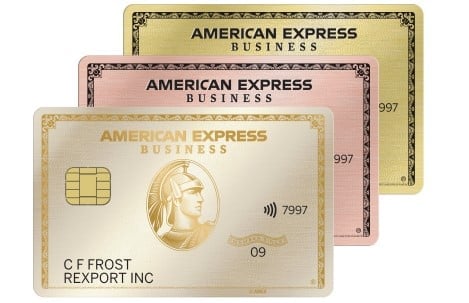Invoice Financing: What It Is and How It Works
Invoice financing can be a good funding option for business-to-business, or B2B, companies with cash tied up in unpaid invoices.
Many, or all, of the products featured on this page are from our advertising partners who compensate us when you take certain actions on our website or click to take an action on their website. However, this does not influence our evaluations. Our opinions are our own. Here is a list of our partners and here's how we make money.
What is invoice financing?
Invoice financing is a type of business financing that functions as a cash advance on outstanding customer invoices. It allows small-business owners to use invoices as a form of collateral to secure a loan or line of credit.
This type of business loan can help you account for gaps in cash flow in order to purchase inventory, pay employees and, ultimately, grow faster.
Because your invoices serve as collateral, invoice financing can be easier to qualify for than other small-business loans, although borrowing costs can be higher. You still own the unpaid invoices and remain responsible for collecting payment on them.
Invoice financing can be structured as a loan or as a line of credit, sometimes called an accounts receivable line of credit.
Did you know...
Invoice financing is also referred to as accounts receivable financing or invoice discounting.
How much do you need?
We’ll start with a brief questionnaire to better understand the unique needs of your business.
Once we uncover your personalized matches, our team will consult you on the process moving forward.
How does invoice financing work?
With invoice financing, lenders advance a percentage of your unpaid invoice amount — potentially as much as 90%. When your customer pays the invoice, you'll pay the lender back the amount loaned plus fees and interest.
Invoice financing companies can charge fees in different ways, but usually they charge a flat percentage (1% to 5%) of the invoice value.
How invoice financing works




Invoice financing example
Here’s a more detailed example explaining how invoice financing works:
Invoice is submitted. Let’s say you’re going to finance a $100,000 invoice with 30-day terms. You submit this invoice to a lender.
Funding is received. The financing company approves your invoice submission and gives you an advance of 90% ($90,000).
Fees are charged and you collect payment. The company charges a 2% fee for each week it takes your customer to pay the invoice. The customer pays in two weeks, so you owe the lender a $4,000 fee — 2% of the total invoice amount of $100,000 ($2,000) for each week.
You repay the lender. After the customer pays the invoice, you’ll keep $6,000 and send $94,000 (the original advance amount, plus fees) to the lender. You’ve paid $4,000 in fees, which calculates to an approximate APR of 53%.
Pros and cons of invoice financing
Pros
Ideal for business-to-business companies and seasonal operations. Invoice financing works best for businesses that primarily deal with other businesses since outstanding invoices are necessary to obtain funding. Invoice financing can help these types of businesses alleviate cash flow issues due to unpaid invoices.
Invoices serve as collateral. Because invoice financing is backed by your invoices, it can be easier to qualify for compared to other types of business loans. Lenders typically consider your customers’ payment history when evaluating applications, meaning you may still be able to qualify if you’re a startup or have bad credit.
Fast to fund. Invoice financing companies usually offer simple applications with minimal documentation and can sometimes provide funding in as little as 24 hours. The quick financing process can be especially advantageous when you're facing cash flow issues or an emergency.
Cons
Can be expensive. The fees on invoice financing may seem competitive at first look — typically ranging from 1% to 5% of the total invoice value per month — but when you calculate these fees into an APR, rates could be as high as 79%. That’s much more than SBA loans, for instance, in which APRs currently range from 10.5% to 14%.
Reliance on customer payments. The amount you pay in fees is based on how long it takes your customer to pay the invoice, meaning it’s difficult to estimate the total cost of invoice financing upfront. If your customer is late or misses a payment, an invoice financing company may charge late or additional fees. You face bigger risks if your customer doesn’t make payments altogether.
Limited to B2B businesses. Direct-to-consumer businesses will be much more unlikely to access this type of financing, as they typically require immediate payments for services or products.
How to get invoice financing
1. Evaluate your qualifications
To qualify for invoice financing, you should have creditworthy customers who have a history of paying on time. In general, the creditworthiness and reputation of your customers will play a larger role in the underwriting process, making it easier to qualify for invoice financing over other business loan options.
Nevertheless, most lenders will consider standard business loan criteria, such as your personal credit score, time in business and business finances as well. Plus, the stronger your qualifications, the more likely you are to access the largest loan amounts and most competitive factor rates.
2. Find and compare lenders
Invoice financing is usually offered by online lenders and fintech companies. Compared to other types of business loans, banks are less likely to provide invoice financing.
Some examples of invoice financing lenders include:
Upwise Capital. This lender offers fast invoice financing that’s accessible to a wide variety of businesses. You can finance up to 100% of your invoice amount and interest rates typically range from 8% to 30%. Upwise accepts borrowers who have at least one year in business, annual revenue of $150,000 or more and a personal credit score of 600 or higher.
Porter Capital. Porter Capital is an Alabama-based lending company that specializes in different kinds of loan products for small businesses across the U.S., including accounts receivable financing. Rates vary depending on other qualifying factors, but businesses can apply online and expect a decision within 24 hours.
Lenders like AltLINE and Triumph Business Capital, on the other hand, offer invoice factoring.
As you compare your lender options, you’ll want to consider factors including, maximum loan amount, factor rates, qualification requirements, funding speed, lender reputation and customer support.
3. Submit your application
Many invoice financing applications can be completed quickly and easily online. Although the specifics will vary based on your lender, you may need to provide some, if not all, of the following for your application:
Basic information about your business.
Business bank statements.
Business and personal tax returns.
Business financial statements, such as an accounts receivable aging report.
Invoices you’d like to finance.
Personal and business credit scores.
Difference between invoice financing and invoice factoring
Invoice financing is sometimes confused with its close counterpart invoice factoring.
With invoice factoring, you sell your invoices to a factoring company at a discount. The factoring company pays you a portion of the invoice’s value and then takes over its collection. After the company receives payment from your customer, it sends you the rest of your money, minus the agreed-upon fees.
Factoring can be a better solution if you don’t mind giving up control of invoices and you trust the factoring company to be respectful and professional when dealing with your customers.
In contrast, with invoice financing, you maintain control over the invoices and still deal directly with your customers. You get all or a portion of the money upfront from the lender. When your customer pays the invoice, you get the remaining balance — minus the fees you’ve agreed to pay the lender.
Invoice financing is usually a better option for businesses that want to maintain control over invoices and deal with their customers directly.









